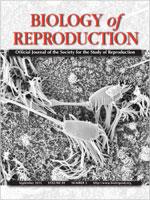During embryo culture, ammonium is generated by amino acid metabolism and from the spontaneous deamination of amino acids at 37°C. Although ammonium has been shown to be embryo toxic, few studies have investigated the mechanism(s) by which the early embryo can regulate ammonium. Whilst 20% oxygen represents a source of stress to the developing embryo, it is not known how oxygen affects the physiology of the embryo in the presence of other sources of stress. The aim of this study was, therefore, to investigate possible pathways involved in ammonium sequestration in the preimplantation embryo and the effect of oxygen on the regulation of these pathways. Glutamine and alanine were investigated as possible ammonium sequestration pathways. Amino acid utilization by blastocysts was determined after culture from the postcompaction stage with 0, 150, or 300 μM ammonium (in either 5% or 20% oxygen) and with or without 500 μM L-methionine sulfoximine (MSO), an inhibitor of glutamine synthetase. In the presence of MSO, ammonium production was significantly increased and glutamate was no longer consumed. Glutamine synthetase inhibition with MSO significantly decreased glutamine formation. Ammonium and oxygen independently altered overall amino acid turnover. Together, 5% oxygen and ammonium promoted glutamine production, whereas in the presence of 20% oxygen and ammonium, glutamine was consumed. Data reveal that both oxygen and ammonium affect amino acid utilization by the developing embryo, however, 20% oxygen appears to have the greater impact. Mouse blastocysts can alleviate ammonium stress by its transamination to both glutamine and alanine, but only under physiological conditions.
How to translate text using browser tools
26 June 2013
Oxygen Affects the Ability of Mouse Blastocysts to Regulate Ammonium
Petra L. Wale,
David K. Gardner
ACCESS THE FULL ARTICLE

Biology of Reproduction
Vol. 89 • No. 3
September 2013
Vol. 89 • No. 3
September 2013
Amino acids
Ammonium
blastocyst
culture
early development
embryo
in vitro fertilization




